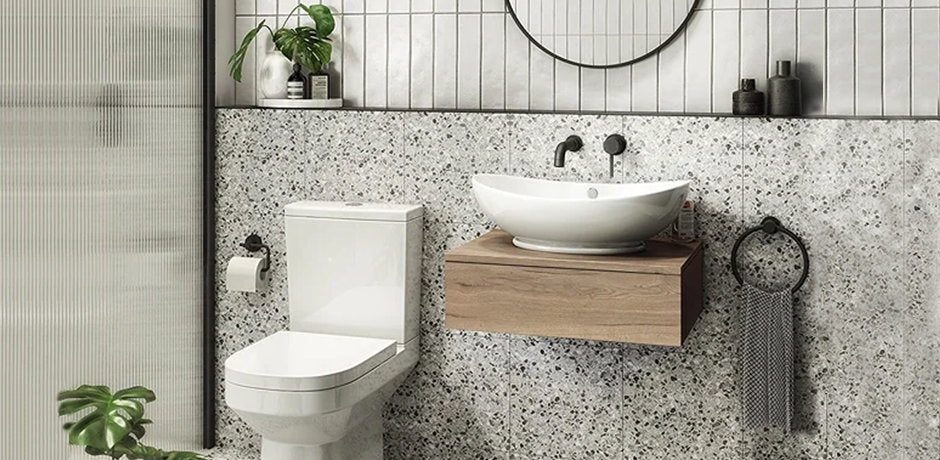
Water-saving toilet trends: Tech Innovations in 2025
Share
In the era of environmental consciousness, the emphasis on water conservation has become more pronounced than ever. With an increasing number of tech-savvy professionals and enthusiasts keen on adopting sustainable practices, the spotlight is now on the latest water-saving toilet trends. These trends are not only reshaping our bathrooms but are also setting a benchmark in the fusion of technology and sustainability.
The global quest for reducing water usage has propelled the development of innovative toilet technologies that promise efficiency and environmental friendliness. As we delve into 2025, water-saving toilets are evolving, drawing attention from tech professionals eager to explore the intersection of technology and eco-friendly solutions.

Smart Toilet Systems: The New Frontier
Smart toilet systems are at the forefront of water-saving toilet trends. These systems are integrated with sensors that optimize water usage during each flush. By analyzing user habits, smart toilets can adjust the water volume needed per flush, ensuring that no drop is wasted. This innovation is not only about convenience but also about contributing significantly to water conservation efforts.
For example, this blog details how smart toilet systems function, offering insights into their operational efficiency and the technology behind them.
Dual-Flush Technology: A Classic with a Twist
While not new, dual-flush technology continues to be a significant player in the realm of water-saving toilets. Whats changing in 2025 is the integration of artificial intelligence to enhance this technology. By learning from household usage patterns, these toilets can automatically determine the necessary flush volume, further minimizing water waste. It's a blend of tried-and-true methods with cutting-edge tech advancements.
For a deeper understanding of these systems, refer to our comparison of water-saving toilet models.
Vacuum-Assisted Toilets: The Future of Flush
Another trend gaining traction is vacuum-assisted toilets. These systems utilize air pressure to aid in flushing, significantly reducing the amount of water required. This technology is particularly appealing to tech enthusiasts who appreciate the innovative approach to achieving high-efficiency standards in water conservation.
For those interested in the mechanics of these systems, high-efficiency toilets explained offers valuable insights.
Portable Water-saving Toilets: Convenience Meets Conservation
The rise of portable water-saving toilets marks a noteworthy trend in 2025. These units are not only perfect for outdoor adventures but also for temporary installations in urban settings. They incorporate advanced flushing mechanisms that use minimal water, thus appealing to the environmentally conscious tech user.
Explore more about their functionality in portable water-saving toilet options.

Technological Advancements and Environmental Impact
As we move further into 2025, the technological advancements in water-saving toilets are not just about innovation but also about making a substantial environmental impact. With climate change concerns escalating, reducing water consumption in household appliances is a crucial step towards sustainability.
Additional insights can be gleaned from resources like the EPA's WaterSense program, which provides facts about water-saving mechanisms and their benefits.
Challenges and Considerations
Despite the promising advancements, challenges remain. The initial cost of installing smart toilets and the need for regular maintenance can be daunting for some consumers. However, the long-term savings on water bills and the positive environmental impact often outweigh these considerations.
For those facing issues, how to fix a water-saving toilet offers practical solutions to common problems.
Conclusion
The evolution of water-saving toilet trends is a testament to how technology can drive sustainability. For tech professionals and enthusiasts, these innovations offer a glimpse into the future of eco-friendly living. By embracing these trends, were not just saving water, but also contributing to a larger movement towards sustainable living.
Frequently Asked Questions
Q: How do smart toilets save water?
A: Smart toilets use sensors to determine the optimal amount of water needed for each flush, minimizing waste.
Q: Are water-saving toilets more expensive?
A: While the initial cost can be higher, the long-term savings on water bills often compensate for the initial investment.
Q: Can I retrofit my existing toilet to save water?
A: Yes, there are kits available that can convert standard toilets into water-saving models. Learn more about retrofitting options.
This article contains affiliate links. We may earn a commission at no extra cost to you.
